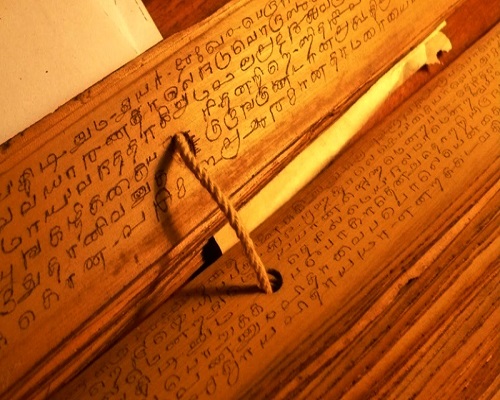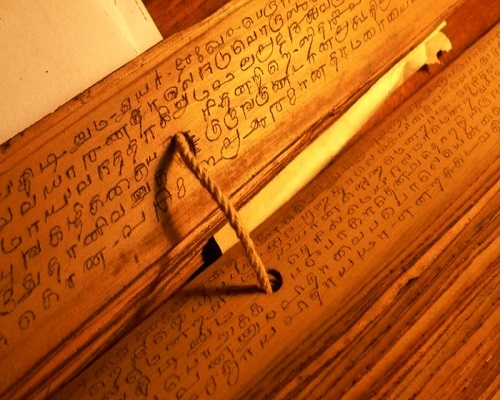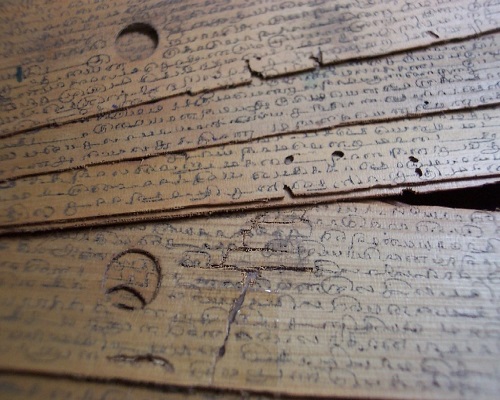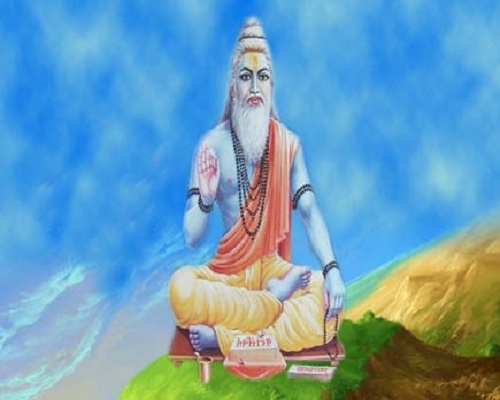Nadi Science

Astrology is part of Vedic Science and is accepted as an abstract science. The ‘Science’ of Nadi Astrology will shed light on the story of your Soul’s Journey. You can get to understand your past, present and future. Nadi is the science of Thumb Print which means that it relies on one’s Thumb Print to accurately predict the future events of your life. The Predictions that Nadi Astrology gives are based on the ancient and sacred inscriptions etched on palm leaves that are collectively known as Nadi. Nadi had its origin from the great Saints of India. The saints achieved their highest consciousness through meditative practices which eventually led them to pick up sound/light waves from the cosmos and able to decipher some meaningful conclusions from them. This transcendental knowledge allowed them to be able to visualize events happening at a precise time scale which is technically called The Nadi. Through this visualization, the saints were able to accurately see the soul travel from start to finish such as their birth, events along the life time, the future and their death. They were able to even predict the life of a soul after death. Out of compassion for the mortal souls, the sages have provided an opportunity for people to correct their karma by doing “Pariharams” which are basically good deeds so that one can lead a less troubled life. These events are written down in the form of poems in the palm leaf.
What is Nadi?

The scientific explanation of Nadi is a time scale and is described as follows:
Ancient Tamil culture had its own way of slicing Time and is detailed below:
- 1/60th of sec is called Para
- 1/60th of Para is called Thathpara – 1/(60)2 of a sec
- 1/60th of Thathpara is Libtham – 1/(60)3 of a sec
- 1/60th of Libtham is Vilibtham – 1/(60)4 of a sec
- 1/60th of Vilibtham is Kalai – 1/(60)5 of a sec
- 1/60th of Kalai is Vigalai – 1/(60)6 of a sec
- 1/60th of Vigalai is Nadi – 1/(60)7 of a sec
1/60th of Vigalai is Nadi – 1/(60)7 of a secSo Nadi is 1/(60)7 of a second which is 3.572 x e-13 (.0000000000003572). One of the sages by the name “Agasthiya” was able to decipher events happening at that speed by virtue of his meditative powers. This power made Sage Agasthiya see the journey of souls accurately which was then documented in a palm leaf by his disciples. They used a special tool, a stylus of sorts to inscribe the writings on the dried palm leaf. This was all done by hand and the ancient Tamil writings were in a poetic form with continuous script without any space between words. The reading of this Tamil script needs adequate training and understanding of the poetic writings.
Why see Nadi?

Every human is in one way or other trying to find the journey of his/her soul which eventually leads to a state of Self-Actualization where he/she understands the cycle of birth and death. The core element that prevents one from realizing this state is Karma. In short you are the reflection of your Karma. Life journey is all about overcoming this Karma and finding a state of happiness. Nadi helps reflect on one’s Karma, mend it which then can eventually lead to elevation of the soul.
Coming back to leading a daily life, humans do not like uncertainty. But that does not mean that one needs to know everything as sometimes uncertainty can be bliss. That said, people can see the Nadi leaf readings, understand their soul journey, probably do some remedies to correct the mistakes, mitigate the adversities and in the process lead a peaceful and beneficial life while they are living in this world. This tool can help reduce your errors in judgement and help you take a path that is progressive.
Science of Thumbprints

Nadi Astrology uses your thumb impression to discover your Nadi Leaf and predict your destiny from the readings written as a divine song in a poetic fashion. That is one difference in Nadi Astrology that sets it apart from traditional astrology that requires you to give your birth details. There are around 108 classifications of human fingerprint, and from there, your unique thumbprint is detailed down to find your grouping or bundle that contains anywhere from 20 to 25 individual leaves. Then the Nadi Reader uses the writings inscribed on the leaves to hone in on your exact leaf.
About Sage Agasthya

Agastya was a revered Vedic sage of Hinduism. In the Indian tradition, he is a noted recluse and an influential scholar in diverse languages of the Indian subcontinent. He and his wife Lopamudra are the celebrated authors of hymns 1.165 to 1.191 in the Sanskrit text Rigveda and other Vedic literature.
Agastya is mentioned in all the four Vedas of Hinduism, and is a character in the Brahmanas, Aranyakas, Upanishads, epics, and many Puranas. He is the author of hymns 1.165 to 1.191 of the Rigveda (~1200 BCE). He ran a Vedic school (gurukul), as evidenced by hymn 1.179 of the Rigveda which credits its author to be his wife Lopamudra and his students. He was a respected sage in the Vedic era, as many other hymns of the Rigveda composed by other sages refer to Agastya. The hymns composed by Agastya are known for verbal play and similes, puzzles and puns, and striking imagery embedded within his spiritual message.
May we know refreshment,
and a community having lively waters.
एषा यासीष्ट तन्वे वयां विद्यामेषं वृजनं जीरदानुम्
His Vedic poetry is particularly notable for two themes. In one set of hymns, Agastya describes a conflict between two armies led by gods Indra and Maruts.



